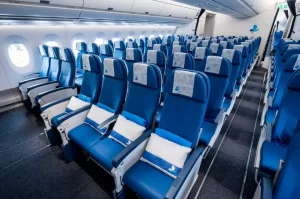Exploring IBERIA: A Journey Through the Heart of the Iberian Peninsula

Introduction
Nestled in the southwestern corner of Europe, the Iberian Peninsula stands as a testament to the rich tapestry of history, culture, and natural beauty. IBERIA, encompassing both Spain and Portugal, captivates the imagination with its diverse landscapes, ancient civilizations, and vibrant contemporary life. This blog post aims to embark on a virtual journey through the heart of the Iberian Peninsula, unraveling the layers that make this region a captivating destination for travelers and enthusiasts alike.
Significance of the Iberian Peninsula
The Iberian Peninsula, often referred to as the “crossroads of civilizations,” has been witness to the ebb and flow of history for millennia. Its strategic geographical location at the crossroads of Africa and Europe has rendered it a melting pot of cultures, each leaving an indelible mark on the landscape. From the Phoenicians and Carthaginians to the Romans and Moors, the Iberian Peninsula has been a canvas upon which diverse civilizations painted their narratives. The enduring legacy of the Moorish occupation, the echoes of the Reconquista, and the amalgamation of Christian, Jewish, and Islamic influences have shaped the unique identity of IBERIA. Understanding the significance of this peninsula requires delving into its historical layers, each contributing to the dynamic mosaic that defines the region.
Purpose of the Blog Post
As we embark on this exploration of IBERIA, the purpose of this blog post is to provide readers with an immersive and comprehensive understanding of the Iberian Peninsula. Beyond the surface allure of flamenco and paella, there lies a depth of history, culture, and natural wonders waiting to be uncovered. Whether you’re an avid traveler planning a visit or a curious mind seeking to unravel the mysteries of the world, this blog post aims to serve as a guide and a source of inspiration. By delving into the historical background, cultural intricacies, culinary delights, and modern dynamics of IBERIA, we aim to paint a vivid picture that transcends the stereotypical perceptions of Spain and Portugal. Join us on this journey as we navigate through the winding streets of ancient cities, savor the flavors of traditional cuisines, and witness the breathtaking landscapes that make IBERIA a captivating destination.
Historical Background
Ancient Civilizations on the Iberian Peninsula
The roots of IBERIA delve deep into the annals of history, where ancient civilizations shaped the foundation of this enchanting peninsula. Phoenician and Carthaginian influences marked the early interactions with the Iberian Peninsula, setting the stage for a diverse cultural tapestry. However, it was the Roman conquest that left an indelible imprint, introducing the region to the concept of Hispania and embedding the peninsula within the grandeur of the Roman Empire. The echoes of this ancient past resonate through archaeological sites, revealing a narrative of conquest, trade, and cultural amalgamation.
Medieval Era and the Moorish Occupation
The medieval era ushered in a period of profound transformation as the Iberian Peninsula experienced the Moorish occupation. The Moors, with their sophisticated culture and architectural prowess, left an enduring impact on the region. This era not only witnessed a flourishing of arts, sciences, and philosophy but also witnessed the interweaving of Islamic, Christian, and Jewish influences. The Reconquista, a protracted struggle between Christian kingdoms and the Moors, eventually led to the formation of modern states. This tumultuous period of history shaped the cultural identity of IBERIA, leaving behind a legacy that is palpable in the architecture, traditions, and customs of Spain and Portugal.
Geographic Diversity
Topography of the Iberian Peninsula
The geographic diversity of the Iberian Peninsula is a visual feast that unfolds across its varied landscapes. From the majestic Pyrenees in the north to the rugged beauty of the Sierra Nevada in the south, the mountain ranges carve a dramatic backdrop. Coastal regions, adorned with pristine beaches, add another layer of allure to IBERIA’s geography. This topographical tapestry not only provides breathtaking vistas but also influences the lifestyle, traditions, and economic activities of the regions it embraces.
Climate Variations
The Iberian Peninsula boasts a climate spectrum that ranges from the sun-drenched Mediterranean shores to the lush landscapes influenced by Atlantic breezes. The Mediterranean climate, characterized by hot, dry summers and mild winters, shapes the southern regions of IBERIA. This climate, in turn, has a profound influence on agriculture and lifestyle. Understanding the nuances of these climate variations adds depth to the appreciation of the region’s diverse ecosystems and the resilience of its inhabitants.
Cultural Tapestry
Language Diversity
At the heart of IBERIA’s cultural tapestry lies a linguistic diversity that reflects centuries of historical influences. Spanish and Portuguese, the predominant languages, convey the essence of the two nations. Yet, the linguistic mosaic extends further with regional languages such as Catalan and Galician, each with its own unique characteristics and cultural significance. Language, as a cultural identifier, weaves a complex web of identities within the broader framework of IBERIA.
Traditional Arts and Music
The soul-stirring rhythms of flamenco in Spain and the haunting melodies of Fado in Portugal echo through the cobbled streets and historic venues, providing a glimpse into the rich artistic traditions of IBERIA. These traditional arts not only serve as entertainment but also act as a repository of cultural narratives, expressing the joys, sorrows, and passions of the people. Exploring the traditional arts and music of IBERIA offers a sensory journey into the heart of its cultural expression.
Culinary Delights
Iberian Cuisine Overview
The culinary landscape of IBERIA is a gastronomic adventure that tantalizes the taste buds with a diverse array of flavors and textures. In Spain, the culture of tapas, small savory dishes, encourages social dining and exploration of local ingredients. Meanwhile, Portugal’s culinary scene is renowned for its seafood specialties, drawing inspiration from the Atlantic Ocean. Exploring the nuances of Iberian cuisine unveils a world where culinary traditions are intertwined with history, geography, and the convivial spirit of the people.
Famous Dishes and Regional Variations
The gastronomic delights of IBERIA extend beyond the generic to showcase iconic dishes that define each region. In Spain, the sizzle of paella pans and the aroma of Jamón (cured ham) are synonymous with the culinary experience. Meanwhile, Portugal boasts the unique flavors of Bacalhau (salted cod) and the sweet indulgence of Pastel de Nata. These famous dishes, with their regional variations, provide a sensory journey that mirrors the diversity and richness of Iberian culinary traditions.
Architectural Marvels
Iconic Landmarks in Spain
Spain boasts a treasure trove of architectural marvels that stand as testaments to its rich history and artistic prowess. The Alhambra in Granada, with its intricate Islamic architecture, transports visitors to a bygone era of Moorish splendor. In Barcelona, the Sagrada Família, Antoni Gaudí’s magnum opus, is a surreal blend of Gothic and Art Nouveau elements, an ongoing masterpiece that captivates the imagination. These iconic landmarks not only showcase Spain’s architectural diversity but also serve as cultural touchstones, inviting exploration and contemplation.
Architectural Gems in Portugal
Portugal’s architectural wonders offer a glimpse into the nation’s maritime heritage and academic excellence. The Tower of Belém in Lisbon, a UNESCO World Heritage site, is a Manueline-style fortress that once guarded the entrance to the city’s harbor. In Coimbra, the University of Coimbra stands as a symbol of academic tradition, its historic buildings and charming courtyards reflecting centuries of intellectual pursuit. These architectural gems in Portugal invite travelers to delve into the country’s past while appreciating the beauty of its well-preserved structures.
Modern IBERIA
Contemporary Culture and Lifestyle
Modern IBERIA is a dynamic blend of tradition and innovation, where contemporary culture and lifestyle coexist harmoniously. Festivals and celebrations dot the calendar, providing a lively glimpse into the vibrancy of Iberian life. Whether it’s the spirited Flamenco festivals in Spain or the colorful processions during Portugal’s Fado celebrations, these events reflect the enduring cultural spirit of IBERIA. Alongside these traditional festivities, modern urban development has transformed cityscapes, offering a juxtaposition of historic charm and cutting-edge architecture.
Economic Landscape
The economic landscape of IBERIA is shaped by key pillars that drive progress and prosperity. The tourism industry, fueled by the allure of historical sites, vibrant culture, and scenic landscapes, plays a pivotal role in the economies of Spain and Portugal. Technological advancements further contribute to economic growth, with both nations embracing innovation in areas such as renewable energy, information technology, and research. This dual emphasis on tradition and progress underscores the multifaceted nature of modern IBERIA.
Outdoor Adventures
Natural Wonders
For outdoor enthusiasts, IBERIA offers a playground of natural wonders waiting to be explored. In Spain, the Picos de Europa mountain range provides a breathtaking backdrop for hikers and nature lovers. Portugal’s Douro Valley, a UNESCO World Heritage site, captivates with its terraced vineyards and meandering river. These natural wonders not only showcase the ecological diversity of IBERIA but also provide a sanctuary for those seeking solace in the embrace of untamed landscapes.
Recreational Activities
From the heights of mountain trails to the shores of pristine beaches, IBERIA offers a spectrum of recreational activities. Hiking and trekking options abound, allowing adventurers to traverse rugged terrain and witness panoramic vistas. Water sports enthusiasts can indulge in a variety of activities along the coastal regions, while beach destinations offer relaxation and sun-soaked escapes. Whether seeking an adrenaline rush or a leisurely retreat, IBERIA’s outdoor adventures cater to diverse interests and preferences.
Travel Tips
Best Times to Visit
Navigating IBERIA requires an understanding of the optimal times to experience its various facets. Different seasons offer distinct charms – from the lively festivals of summer to the serene landscapes of autumn. Considering factors such as climate preferences and preferred activities ensures a tailored and enjoyable travel experience.
Local Customs and Etiquette
Immersing oneself in the local culture involves respecting and understanding the customs and etiquette of the region. Whether it’s the traditional greetings in Spain or the polite gestures in Portugal, acknowledging and embracing these cultural nuances enhances the overall travel experience.
Transportation Options
Efficient transportation is key to exploring IBERIA seamlessly. From well-connected public transportation networks to picturesque road trips, understanding the available options facilitates smooth navigation between cities, towns, and natural wonders. Whether opting for trains, buses, or rental cars, choosing the right mode of transportation contributes to a memorable and stress-free journey through IBERIA.








